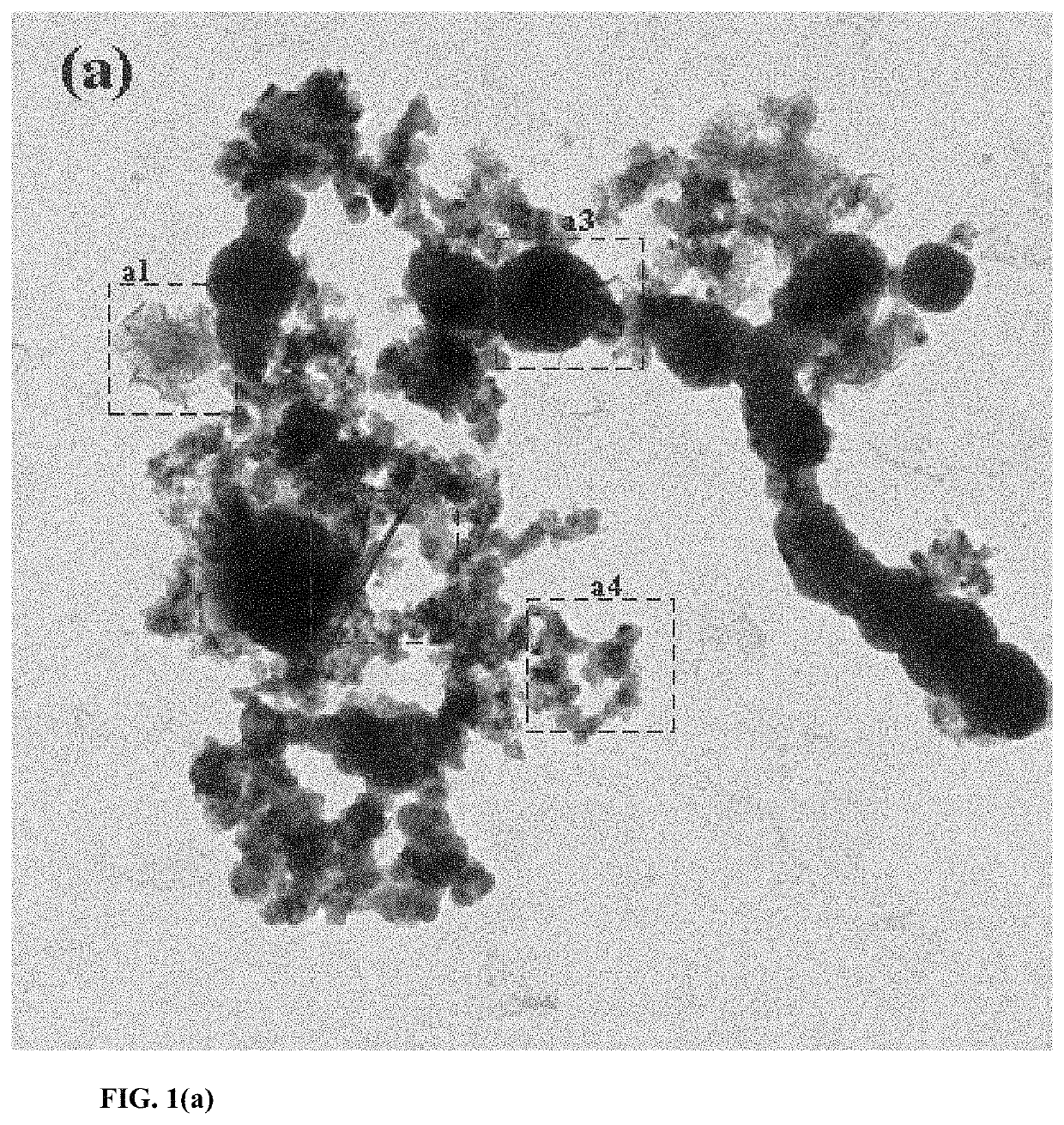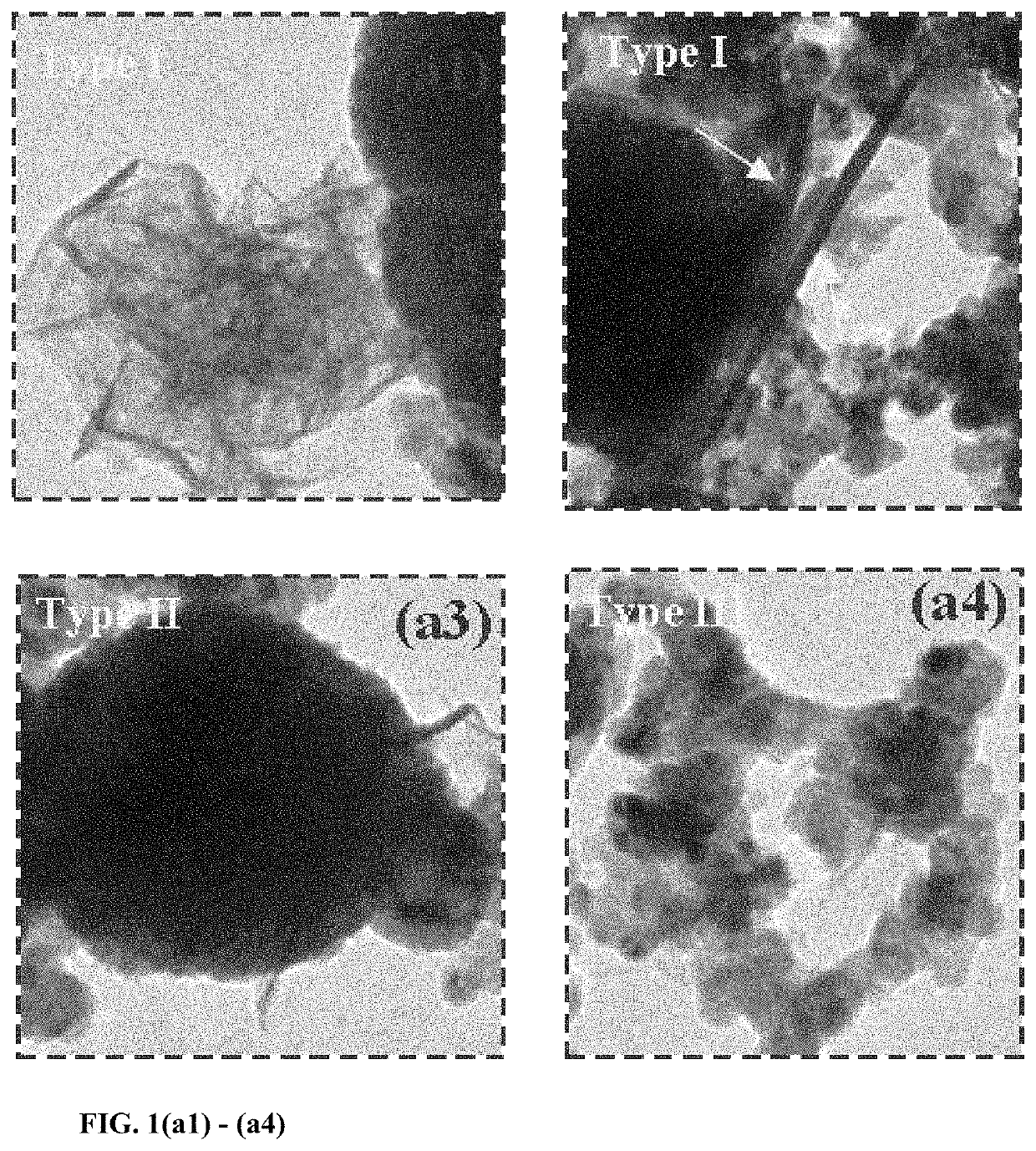Sulfidated nanoscale zerovalent iron and method of use thereof
a technology of zero-valent iron and nanoparticles, which is applied in the direction of water treatment compounds, water/sludge/sewage treatment, water contaminants, etc., can solve the problems of reducing the overall capability of nzvi for tce degradation, wide spread of soil and groundwater contamination, and significant potential to pollute large volumes of groundwater. , to achieve the effect of reducing the concentration of chlorinated organic compounds
- Summary
- Abstract
- Description
- Claims
- Application Information
AI Technical Summary
Benefits of technology
Problems solved by technology
Method used
Image
Examples
example i
Materials and Synthesis
[0093]FeSO4.7H2O (99%), NaBH4 (≥98.5%), Na2S (99%), palladium acetate (99%), chloroethenes (vinyl chloride and cis 1, 2- & trans 1, 2-dichloroethene) and hexenes (cis 3- & trans 3- ≥95%) were obtained from Sigma-Aldrich. Gas standards of ethane, ethene, methane (99%) and 1-, cis-, trans-butene (1000 ppm in N2) were obtained from Scotty Specialty Gases. Acetylene (99%) was obtained from Praxair Inc. Methanol and 1-butanol (99%) were purchased from Fisher scientific. Water used in experiments was double deionized.
[0094]Bare nZVI particles were synthesized using a procedure described previously (Rajajayavel et al., 2015, Water research, 78: 144-153) with some modifications. Briefly, 1.3 M NaBH4 was added drop-wise at 5 mL / min using a syringe pump to a continuously mixed aqueous solution of 0.3 M FeSO4.7H2O under anaerobic conditions, followed by mixing for 30 minutes. The resulting NZVI suspension was washed with methanol, dried under nitrogen, and stored in an a...
example ii
Reactivity Studies
[0099]TCE degradation experiments were carried out at room temperature in 60 mL vials crimp-sealed with butyl rubber septa and samples were prepared in the anaerobic chamber. 100 μL TCE was added to reaction vials containing a total aqueous volume of 24.9 mL and 40 mg of nanoparticles.
[0100]Upon addition of TCE, a small globule of NAPL was formed. This provided a constant saturated aqueous solution of TCE throughout the duration of the reactivity experiments and ensured that degradation rates and extents were not influenced by any mass transfer limitations.
[0101]Relatively small changes in the headspace TCE concentrations occurred in the reactors, due to the saturated TCE solution and stoichiometrically limited amounts of Fe0 compared to TCE. Thus TCE disappearance was tracked by quantifying TCE degradation products with time and using a carbon mass balance approach as described in our previous study (Bhattacharjee et al., 2016, Environmental science &technology, 5...
PUM
| Property | Measurement | Unit |
|---|---|---|
| size | aaaaa | aaaaa |
| size | aaaaa | aaaaa |
| size | aaaaa | aaaaa |
Abstract
Description
Claims
Application Information
 Login to View More
Login to View More - R&D
- Intellectual Property
- Life Sciences
- Materials
- Tech Scout
- Unparalleled Data Quality
- Higher Quality Content
- 60% Fewer Hallucinations
Browse by: Latest US Patents, China's latest patents, Technical Efficacy Thesaurus, Application Domain, Technology Topic, Popular Technical Reports.
© 2025 PatSnap. All rights reserved.Legal|Privacy policy|Modern Slavery Act Transparency Statement|Sitemap|About US| Contact US: help@patsnap.com



